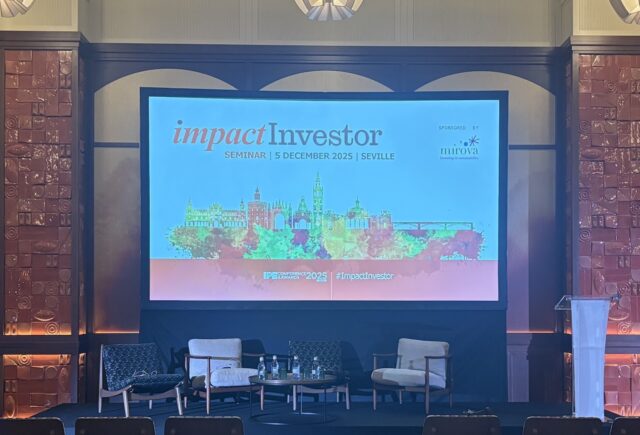The Swedish government together with the Nordic Green Bank has launched a new facility to scale up clean cooking technologies for up to 3 million Africans.

They have been called the ‘forgotten 2.6 billion’, an astounding number of the world’s population still cooking on open fires and inefficient stoves in poorly ventilated buildings, using polluting fuels like wood, charcoal, kerosene and even dung.
Poor access to modern and clean cooking solutions costs the world about $US2tn a year, according to a 2020 study.
The Nordic Green Bank (Nefco) and the government of Sweden launched the Modern Cooking Facility for Africa (MCFA) to tackle this issue by developing new clean cooking markets in Kenya, Mozambique, Tanzania, Zambia, and the Democratic Republic of Congo. The Facility will offer results-based financing (RBF) for private-sector actors.
Every year, 3.8 million people die prematurely from illnesses attributable to indoor pollution, according to the World Health Organisation. Of those deaths, pneumonia (27%), heart disease (27%), chronic pulmonary disease (20%), stroke (18%), and lung cancer (8%) are the main causes.
Drill a little deeper and the statistics are even more alarming. Household air pollution almost doubles the risk for childhood pneumonia and is responsible for 45% of all pneumonia deaths in children under five. And the longer-term health problems fuel wider socio-economic hardship and poverty.
The impact of people burning unsustainable fuels for heat and energy also takes a huge toll on the environment, adding as much as 2.5bn tonnes of CO2 yearly, or equivalent to some 5% of all anthropogenic carbon.
A modern facility for modern cooking
Carin Jämtin, Director General at the Swedish Development Agency (SIDA), says up to 900 million people in sub-Saharan Africa alone stand to benefit from cleaner, more modern cooking methods.
SIDA has worked with Nefco on various successful clean and affordable electricity projects and anticipates similar progress in the clean cooking sector as well.
The new MCFA is designed to complement SIDA’s Beyond the Grid Fund for Africa, which supports access to clean and affordable electricity in the same target region.
Armed with a target fund of around US$40mn, and with Sweden as its first donor, the Facility is expecting to launch its first calls for proposals in the first half of 2022.
Nefco makes it clear that contracted clean cooking service providers will receive financial support based on milestones reached. It says the key to all of its funded projects, including presumably the clean cooking facility, is concrete results or what it calls a ‘return on impact’.
The Modern Cooking Facility for Africa’s headline target is to provide 1.5 to 3 million Africans access to clean cooking solutions to improve overall health and boost economic growth.
Getting the flywheel spinning
The organisations have done their homework during a detailed scoping exercise carried out in the affected countries between 2020 and 2021. The study examined the best ways to use results-based finance to “incentivise the development and sale of innovative clean cooking solutions at scale.”
They found merit in new instruments dedicated to “high-tier cooking solutions” such as sustainably produced bioethanol, liquid biofuels, biogas, electric cooking solutions, and solid sustainable biofuels (e.g. pellets and briquettes).
Ruben Walker, founder and CEO of African Clean Energy (ACE), a prominent B-Corp in his sector, says Nefco’s commitment to result-based finance builds on pioneering work by the Dutch government’s SDG 7 Results and Energising Development (EnDev) initiatives.
High-level announcements like this can take some time to make a difference on the ground, he says, “but they certainly play a role in getting the flywheel spinning,” allowing early-stage companies to improve their business case while scaling up.
Walker thinks there is scope for more arrangements like this and that, despite some recent positive movement, the investor ecosystem has not yet “fully grasped the potential of result-based financing in the clean cooking sector.”
The historical framing has not been helpful, he believes: “The term ‘clean cooking’ and imagery of artisan-produced cookstoves belie the fact that we’re speaking about over 95% of the household energy consumed by at least a third of the global population.”
“Anybody who is serious about their belief that carbon will become an influential asset class should be paying very close attention,” Walker stresses, and the solutions developed “need to be quite technically sophisticated and data-rich.”
A closer look at impact potential
“How do clean cookers affect health and the environment, and what role do external factors play in the business of clean cookstoves?” FMO, the Dutch Development Bank for Entrepreneurs, asked this very question as part of a study to understand the impact of investing in this field.
FMO studied two key areas: the impact of adopting clean cooking on health, socio-economic and environmental outcomes; and how policy, market and household characteristics affect clean cooking businesses.
On impact, FMO found benefits to household savings and disposable income thanks to better fuel efficiency. And locally produced clean cookstoves were naturally shown to help the local economy.
Modern stoves relieved women from having to collect wood or other fuel types, leaving more time for self-care, education and other productive activities.
The positive effects of clean cooking depended on cookstove design, especially the particulate matter produced, and the regularity of use. The study revealed an issue of ‘stacking’, where households gather multiple cookstoves but return to traditional cooking methods when the new solutions prove unsuited to their different requirements.
More “robust evidence” is needed to confirm the beneficial impacts on the environment, according to the findings.






